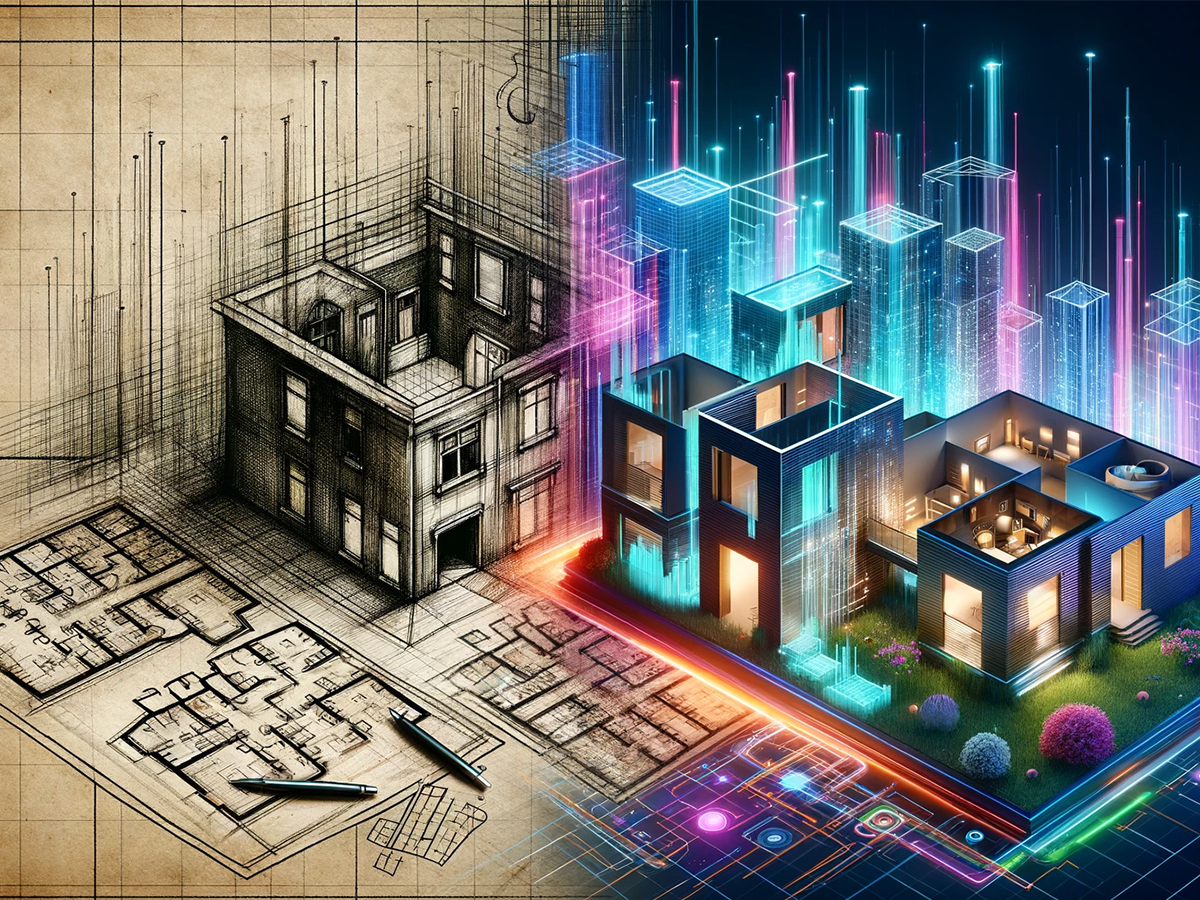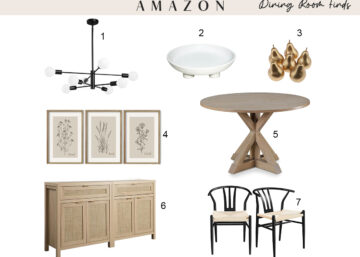This Habit Will Revolutionize Your Property Development Process
Introduction
Overview of Current Property Development Challenges
In the evolving landscape of property development, professionals across the spectrum confront a myriad of challenges that can stymie projects, inflate budgets, and dilute the envisioned aesthetic and functional goals. Architects and interior designers grapple with conveying their visionary concepts in a manner that resonates with their clients’ expectations.
Real estate developers and agents face the uphill battle of marketing properties still in the conceptual or under-construction phase, struggling to spark the imagination of potential buyers or tenants.
Homeowners and property investors, on their quest to create or transform spaces, often find themselves mired in indecision, unable to visualize the myriad of possibilities their space offers. Similarly, commercial business owners endeavor to craft environments that not only embody their brand’s ethos but are also optimized for functionality and customer experience. These challenges, while diverse, share a common root: the difficulty of bridging the gap between conceptual vision and tangible reality.
The Power of a Singular Habit
Amidst these challenges, a singular, transformative habit stands out for its potential to revolutionize the property development process: the practice of meticulous pre-execution visualization. This habit, often overlooked in its simplicity, holds the key to unlocking a realm of solutions traditionally considered beyond the reach of standard industry practices. By adopting a methodology that prioritizes detailed visualization – encompassing advanced 3D rendering and precise floor planning – before physical work commences, stakeholders can navigate the complexities of property development with unprecedented clarity and confidence.
This approach is not merely about employing new tools or technologies; it represents a fundamental shift in how property development is conceptualized and undertaken. It encourages a departure from conventional linear processes, advocating instead for a more integrated, holistic approach to design and development. This initial phase of visualization becomes a critical juncture, where ideas are not only presented but explored in depth, allowing for a collaborative refinement of concepts that align closely with the intended outcome.
By embracing this habit, the various stakeholders involved in property development can overcome traditional barriers, making informed decisions that enhance the aesthetic appeal, functionality, and marketability of their projects. The following sections will delve deeper into how this habit can be cultivated and integrated into the property development workflow, illuminating the path towards a more efficient, creative, and successful project realization.
The Transformative Habit: Visualization Before Execution
Understanding the Habit
The habit of visualization before execution in property development is a practice that involves using advanced 3D rendering and detailed floor planning to fully conceptualize a space before any physical changes are made. This method goes beyond simple sketches or basic models; it requires a deep dive into the potential of a space, leveraging technology to explore and refine every aspect of design and functionality. This habit is transformative because it allows for a comprehensive exploration of possibilities, ensuring that every decision is informed and every detail is deliberate.
Benefits for Different Stakeholders
Each stakeholder in the property development process stands to gain significantly from this habit, albeit in different ways:
- Architects and Interior Designers: For these professionals, visualization before execution offers a canvas to not only showcase their creative ideas but also to experiment with and refine those ideas in real-time. It allows them to present their visions to clients in a way that is both immersive and easily understandable, bridging the gap between concept and reality.
- Real Estate Developers and Agents: This habit can transform the way properties are marketed and sold. By providing potential buyers or tenants with a detailed 3D visualization of the space, developers and agents can evoke a stronger emotional connection, making the space more desirable and increasing the likelihood of a sale or lease.
- Homeowners and Property Investors: For individuals looking to build, renovate, or invest in properties, visualization before execution offers a tool for risk mitigation. It enables them to see and understand the potential outcomes of their decisions, allowing for adjustments before any costly commitments are made.
- Commercial Business Owners: For those looking to design or remodel commercial spaces, this habit ensures that the final layout not only maximizes functionality but also aligns with the brand’s image and values. It allows for a level of precision in design that can enhance customer experience and operational efficiency.
The habit of visualization before execution represents a paradigm shift in property development. It champions a more thoughtful, deliberate approach to design and construction, where every step is informed by a clear, comprehensive vision of the end goal. By adopting this habit, stakeholders can not only enhance the quality and appeal of their projects but also navigate the development process with greater confidence and efficiency.
The Role of Detailed Floor Plans
Benefits of Floor Planning
Detailed floor planning stands as a cornerstone in the property development process, offering a blueprint that guides every subsequent decision, from architectural design to interior decoration. This meticulous approach to planning allows stakeholders to optimize the use of space, ensuring that every square inch serves a purpose and contributes to the overall aesthetic and functionality of the property. For architects and interior designers, a detailed floor plan is an invaluable tool that facilitates the exploration of different layouts and the effective communication of their vision to clients. Real estate developers and agents can use these plans to demonstrate the potential of a property, helping clients visualize their future in the space. Homeowners and investors, meanwhile, gain a clear understanding of how their property can be tailored to meet their needs, enabling informed decisions about structural modifications or design elements. For commercial business owners, the strategic arrangement of space is crucial to operational efficiency and customer satisfaction, making detailed floor planning an essential step in creating an environment that aligns with their business objectives.
Integrating with 3D Renderings
The synergy between detailed floor plans and 3D renderings enhances the property development process exponentially. While floor plans provide a bird’s-eye view of the spatial arrangement, 3D renderings bring this layout to life, offering a realistic representation of how the space will look and feel. This integration allows stakeholders to assess not just the spatial logistics but also the aesthetic and emotional impact of a design. It facilitates a comprehensive review process, where potential issues can be identified and addressed before construction begins, saving time and resources. For clients, the combination of floor plans and 3D renderings provides a level of clarity and assurance that makes it easier to commit to decisions and move forward with confidence.
Tools and Techniques for Effective Floor Planning
Advancements in technology have made it easier than ever to create and manipulate detailed floor plans. By leveraging these tools, stakeholders can explore a wider range of design options, make more informed decisions, and ultimately achieve better outcomes.
The role of detailed floor plans in the property development process cannot be overstated. By providing a solid foundation for design decisions and facilitating the integration with 3D renderings, detailed floor planning enables a level of precision and foresight that significantly enhances the outcome of property development projects.
Overcoming Common Objections
The transformative habit of integrating advanced visualization techniques, such as detailed floor plans and 3D renderings, into the property development process is not without its detractors. Common objections range from concerns over cost and time to skepticism regarding the tangible benefits of these practices. Addressing these concerns requires a nuanced understanding of the value that visualization brings to the table, not just in terms of aesthetic appeal but also in enhancing decision-making, reducing risks, and ultimately saving resources.
Addressing Cost Concerns
- The Myth of High Costs: A prevalent objection to the early adoption of detailed visualization techniques is the perceived high cost. It’s essential to debunk this myth by demonstrating how these upfront investments can lead to significant savings down the line. By identifying design flaws, spatial inefficiencies, or potential regulatory issues early in the process, stakeholders can avoid the much higher costs associated with mid-construction changes, not to mention the potential for project delays.
- Long-Term Value: Beyond immediate cost savings, detailed visualization can add long-term value to a property by enhancing its functionality, aesthetic appeal, and marketability. Properties developed with a keen eye on design and spatial planning tend to fetch higher prices and attract more interest in the competitive real estate market. This aspect of visualization is particularly compelling for real estate developers and investors looking to maximize their return on investment.
Time and Resource Management
- Efficiency and Streamlining: Critics often argue that the time spent on detailed planning and rendering could delay project timelines. However, this perspective fails to account for the efficiency gains that visualization facilitates. By clarifying expectations and resolving uncertainties early in the project, stakeholders can streamline the development process, reducing the need for revisions and avoiding costly delays.
- Resource Optimization: Detailed visualization allows for a more judicious allocation of resources. By understanding the spatial and aesthetic aspects of a project in advance, developers can make informed decisions about material selection, labor allocation, and even marketing strategies. This level of planning ensures that resources are not wasted on unfeasible ideas or unnecessary modifications.
Overcoming Skepticism with Education
- Demonstrating Tangible Benefits: One of the most effective ways to overcome objections is by showcasing the tangible benefits of visualization through case studies and real-world examples. Highlighting projects that have successfully leveraged detailed floor plans and 3D renderings to overcome design challenges, enhance project outcomes, and achieve financial savings can persuade skeptics of the value of these techniques.
- Educational Initiatives: Engaging in educational initiatives to inform clients, stakeholders, and the broader industry about the advantages and methodologies of advanced visualization can gradually shift perceptions. Workshops, seminars, and published content that delve into the technical and financial benefits of this approach can help demystify the process and encourage its adoption.
Leveraging Testimonials and Demonstrations
- Client Testimonials: Sharing testimonials from clients who have experienced the benefits of detailed visualization first-hand can be a powerful tool in overcoming objections. Positive feedback on how these practices facilitated better decision-making, saved money, or enhanced the final product can serve as compelling evidence of their value.
How to Cultivate This Habit
Embracing a New Mindset
The first step in cultivating the habit of visualization before execution is to embrace a new mindset that prioritizes comprehensive planning and visualization in every project. This mindset shift requires recognizing the value of investing time and resources in the initial stages of development to save on costs, time, and potential rework later. It’s about understanding that detailed visualization, through 3D renderings and floor plans, is not an additional expense but a critical investment in the project’s success. Stakeholders must see this approach as an integral part of the development process that enhances decision-making, improves project outcomes, and ultimately leads to higher satisfaction for all parties involved.
Integrating Visualization Tools into Your Workflow
- Selecting the Right Tools: With numerous companies available for 3D rendering and floor planning, selecting the right one that fits your specific needs is crucial. Look for companies that offer flexibility, user-friendliness, and high-quality outputs.
- Making Visualization a Standard Practice: Incorporate visualization techniques as a standard step in your project workflows. This means establishing protocols where every project undergoes detailed planning and visualization before any physical work starts. Make it a habit to present clients with 3D renderings and detailed floor plans early in the discussion phase to set clear expectations and facilitate more informed decision-making.
Building a Culture of Collaboration
Visualization before execution is not a solo endeavor but a collaborative process that involves architects, designers, developers, and clients. Building a culture of collaboration where open communication and feedback are encouraged can enhance the effectiveness of visualization techniques. Encourage team members and clients to engage with the visualizations, provide input, and explore alternatives together. This collaborative approach not only improves project outcomes but also fosters stronger relationships with clients and within the project team.
Conclusion
The Future of Property Development
The habit of visualization before execution, encompassing detailed 3D renderings and comprehensive floor planning, is more than just a trend in the property development industry—it represents the future of how projects are conceived, planned, and executed. This approach enables a level of precision, creativity, and efficiency that traditional methods simply cannot match. As we look forward, it’s clear that those who embrace this habit will lead the industry, setting new standards for quality, innovation, and client satisfaction. The ability to visualize every aspect of a project before physical work begins not only minimizes risks and costs but also opens up new possibilities for design and functionality that were previously unimaginable.
A Call to Action
To architects, interior designers, real estate developers, agents, homeowners, property investors, and commercial business owners: the call to action is clear. Embrace the transformative habit of visualization before execution. Invest in 3D rendering and detailed floor planning into your workflow. Foster a culture of collaboration and continuous learning within your teams and with your clients. By doing so, you will not only enhance the success of your projects but also contribute to the evolution of the property development process.
Embracing Change for a Brighter Future
The journey toward fully integrating visualization techniques into the property development process is both exciting and challenging. It requires a willingness to change, adapt, and continuously strive for improvement. However, the rewards—increased efficiency, reduced costs, and the realization of visionary projects—far outweigh the challenges. As we move forward, let us embrace this change, not just as a means to enhance our individual projects, but as a way to shape the future of the property development industry. Together, we can create spaces that are not only functional and aesthetically pleasing but also deeply aligned with the visions and dreams of those we serve.








